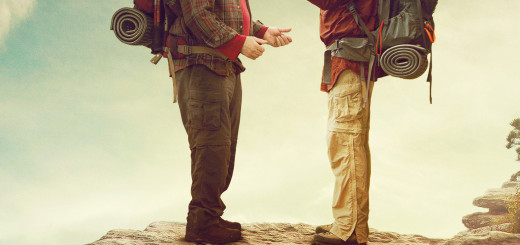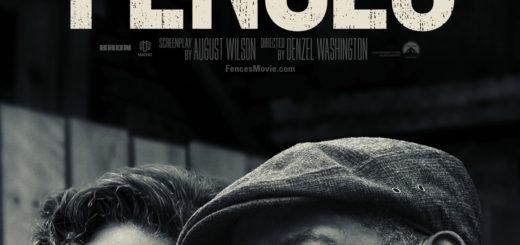The Lana del Ray Music Promotion Experiment – Part Two: No Barriers, No Shame In Sharing
In Part One of this post, I described my plan to try a music video driven campaign for some established acts to see if I could help to raise their profiles.
I met Zac Eubank, the director of the first video I executive produced, “What We’d Do” by The Sexy Accident.  After that video came out, I worked with Zac to set up a package of three music videos for the next phase of the experiment.  Doing three videos simultaneously was a good way to utilize Zac’s time and get more out of our budget.  We decided to rent a really nice camera package for a week and Zac and Becca Scott were kind enough to come to Kansas City for a week to do the shooting for the videos.
We recruited a lot of talented people to help us out. Â Zac brought in several actors for two of the videos and we were able to get two local Irish Dance schools to send us a busload of students at the 11th hour to get them to play tornado refugees and (of course) dance to some Irish rock.
Each video deserves an additional post for more about how it was made, who was involved and what worked and didn’t.  I won’t go into much of that here, but I do plan to return to that in the coming weeks for those who want to know more of the back story on the videos themselves.  This post is more about how we marketed the videos and the results of the experiment itself.  It consisted of three videos for three bands:
- “Smile” by John Maxfield – the active project I wanted to promote. Â John’s album “One Word is True” had just come out at the end of 2011, and he was playing live 2-3 times a week promoting it. Â Our hypothesis was that the video would help people take John more seriously and therefore go to his shows or download his album. Â We felt that the video had to be at least as good as the album and John’s live performances so that each complimented the others.
- “Building a Boat” by The Elders – a wildcard of sorts – this was a band that has an enormous following, however most of their audience is older than the average YouTube user. Â Here we were taking a band that was a known quantity live and seeing if we could boost them at all with a video. Â The main goal with this video was to try and broaden the appeal of the Elders to a younger generation – for example, people near the age of the dancers.
- “When The Bad Things Come” by Dale Maxfield & The Silver Hammers – the control. Â My latest album came out in 2004 and I had done very little to promote it. Â I set up a couple of shows to put a little bit of buzz back into the project, but this was very much the experiment’s control. Â We were going to put it up there, do a very basic amount of promotion and use it to gauge the difference that John’s live performances made to his numbers
The Promotional Plan:
- Lowest Barrier to Entry: YouTube -Â YouTube’s main attractiveness for artists is its ubiquity. Â It runs on just about any device and people can start listening/watching almost instantly without downloading or installing anything
- It’s a Commercial -Â The music videos were used as commercials for the bands, specifically each band’s most recent album. Â Each of the songs came from the latest release.
- Free Download -Â Rather than ask the viewer to pay or go to the band’s website to hear more, we put a link directly below each video in the description to a single-click download directly to a .zip file of the full album. Â The thought was that people would be able to download the album in the time it took to watch the video and could listen to the rest whenever they wanted, but we made it as easy as possible to get the full album in one click for free as early as the first visit to YouTube
- Critical Mass - One of the things I learned watching the Lana del Ray videos is that there was a tipping point where a video gets a certain number of hits that give it credibility.  What this means is that people are more likely to watch a video with 1000 views than 100.  The first time I saw her video for “Video Games” it had about 100k views.  The next time, it was closer to 1 million.  What many people don’t realize is that you can purchase views by paying companies who farm out people who either manually or automatically watch the video to rack up the hit counter.  We decided to purchase 25,000 hits for each video to reach a critical mass and give the video a better chance of being received by our audience.An important point here: People typically stop me here as though I’ve just told them there is no Santa Claus.  YouTube hits aren’t organic?  Then why pay for them if you’re just inflating your own ego?  The reason to buy hits is not because hits make us feel important or translate into money.  The reason is that other people tend to take videos with higher view counts more seriously and give them a chance.  It’s important to know that if hits are being bought how many of them are, and how manydoes it take to get to where the organic numbers start coming in on their own.  Here is what I have found to be true:
- At 5,000 hits you can expect around 10 organic hits per week (more if you promote the video at shows, Facebook, etc.)
- At 25,000 hits you can expect around 100 organic hits per week (again, more if you promote the video at shows, Facebook, etc.)
- No-shame Sharing – Not only did we give the albums away as free downloads below the video, but we made it clear that we  wanted our fans to share the albums with one another.  They could send them the link, burn them a CD – it didn’t matter, just know that you’re actually helping the band by telling your friends to give us a try.  This takes more work than you would think.  People are very used to bands shaming them about file sharing.  They’re hardwired to think it’s wrong to give away a musician’s work, so we have to reinforce it on stage, on Facebook and anywhere else we talk to fans and potential fans: The music is free.  If you want to support the bands financially, there are many ways to do that – but when and how much if at all is entirely up to you.  What we want more than your $5 for our CD is for you to make our music available to the people you know that we could never reach otherwise.
- Cross Promotion -Â The video is a 24/7 commercial for the band on YouTube. Â It’s there whether we’re playing a show in your hometown or not. Â The album link is there too, available for you to download any time you want. Â From stage, we would tell people about the video, the download and the sharing policy. Â We would hand out CDs too, but the URL was always there. Â The message was as simple as possible. Â “Go see our video. Â If you like it, download the album for free. Â If you like that, give the link to your friends.” Â People at shows, even with the best of intentions aren’t going to remember to visit your web site. Â They may not even remember the band. Â Our handouts all pointed there, the CDs had the album on them and the link to the YouTube video and we regularly told people “If you have a smartphone, type ‘John Maxfield Smile’ into YouTube’ and check it out.
Results:
John Maxfield’s “Smile” was the heaviest one we promoted and was by far the most successful.  John played dozens of shows between the video’s release and the day it crossed 100k views.  For “Smile,” after the 25k-paid-view tipping point was reached, a week without a show yielded 100-200 views.  Most of these were organic, people re-playing the video or going back to download the album.  Because we used Google short-links, we could tell whether people were downloading the album from John’s web site or from the YouTube video.  On average, the album was getting downloaded at a ratio of 1 download per 100 views.  That is incredibly high for any sort of free marketing campaign for an independent artist.
A lot of times the spike after a show would have a lower ratio of downloads because we were handing out physical CDs to people at shows too – making the barrier to entry even lower and thanking them for attending the show. Â While the CDs we handed out were free (it is better to be heard than paid!) there were many people that insisted on handing us money for them as tips. Â The most common amount was $10. Â The largest amount was $40. Â On average, we brought in about $4/CD, which is about double the cost to produce them. Â Not losing money is a good thing, and doing it while getting the message out is a great thing.
The biggest spike came at the end of a very long week. Â John played a Sunday night show at Los Angeles’ Whisky A Go Go followed by a Friday night show in Chicago at club next to Wrigley field that started just as the game ended. Â In the 48 hours after that show, “Smile” got a spike of 25,000 views. Â It was the biggest one to date and geographically showed as being about 80% attributable to the Chicago area, 10% to the Los Angeles area and another 10% either undisclosed or randomly located.
The Elders’ “Building A Boat” – Started off very strong but failed to really gain traction outside of the established fan base of The Elders.  At about 1000 views per month since its release (remember, we don’t count the first 25k) its traffic is coming in mainly from Facebook Event pages for the band’s shows and the occasional organic search after a festival where someone searches for them on Google or YouTube and finds it.  We have been also trying to get it’s “be part of the solution” message tied to some different activism campaigns including “Be The Match,” which has not started in earnest yet.  The video makes direct reference to the 2011 Joplin Tornado Disaster and while we’ve reached out to become part of an official archive at reJoplin.org, the site has stalled and has yet to launch.  This video has more life left in it, as do The Elders who are about as much fun to watch live as any band you’ll see.
Dale Maxfield & The Silver Hammers’ “When The Bad Things Come” worked great as the control.  It was the hardest and longest to complete (all of the hand-drawn, frame-by-frame animation was grueling) and it was only promoted on the band’s web site and Facebook page.  It’s 500 or so hits accurately show the traffic from these “minimum required” marketing efforts and serve as a benchmark for why good promotion is so important.  Imagine if this was the result of all three videos?  If we had played all the shows that John played or had the established fan base of the Elders and we got a paltry 500 hits?
Conclusion
This goes to show that promotion is still very important to recording artists in 2012.  Making an album and playing shows is not enough to get attention for the hard work of writing, recording and releasing material.  The video is only part of the strategy as well – look at the difference between the Dale Maxfield and John Maxfield videos’ performance.  Promotion, cross-promoting the video from shows and social media is critical.  YouTube is a 24/7 venue playing your song on any schedule your potential fan needs it.  If they can’t make your show – they can make YouTube.  If they can make your show, allowing them to give your album away by sharing the YouTube link is a huge tool to help them do that.  And it doesn’t cost an astronomical amount – you just have to do it and be consistent about it.  These videos cost about 20% of the cost of making the albums.  The 25k views cost a few hundred dollars.  Rather than send out unsolicited press kits to radio stations and praying that would turn into fans, we spent our money on good videos to use as commercials for free albums.  I am very satisfied with the results.
Remember, it’s always better to be heard than unheard – drop the price barrier for people who might be your new fans. Â You won’t be any worse off for it for trying, and you might just get new fans for the trouble. Â I know a lot of musicians with thousands of unsold CDs in their basements. Â It’s time to put those to good use!


